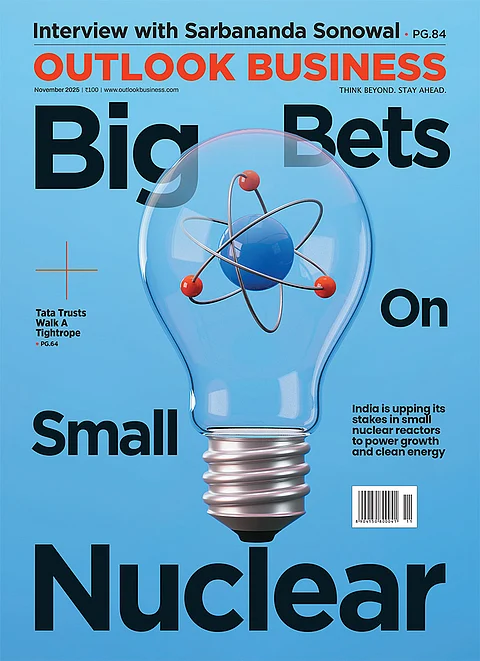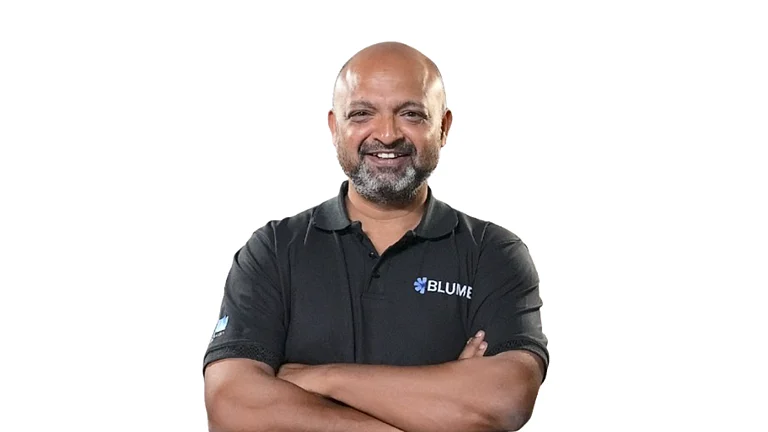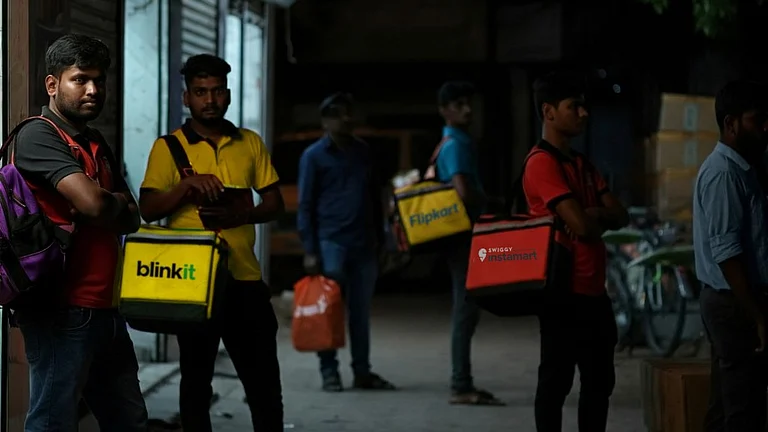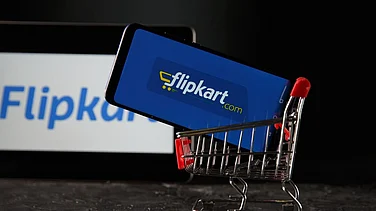Just when Blinkit, Instamart and Zepto were slowing down in their quick commerce game, Amazon’s entry may spur them towards a more aggressive race. The ecommerce giant has begun offering deliveries in as little as ten minutes in Delhi after Bengaluru, under the name ‘Amazon Now’.
“We are excited with the initial customer response and positive feedback, especially from Prime members. Based on this, we are now expanding the service over the next few months addressing immediate customer needs while maintaining Amazon’s standards for safety, quality and reliability,” the company said in an official statement.
Till now, the company was moving at its own pace with the idea that Indian consumers would wait a day or two for their deliveries. But the game has changed now—convenience is king here. Online shoppers want everything from milk to mobile chargers within a few minutes at their doorsteps.
And the big three of the quick commerce market—Blinkit, Instamart, Zepto—have cracked the consumer code perfectly. This trend has nudged Amazon and Flipkart to enter the 10-minute delivery segment. It started as an experiment in the larger ecommerce sector but has now become a necessity for online retailers.
Kathryn McLay, chief executive of Walmart International—an American multinational retail corporation—revealed that quick commerce now accounts for 20% of India’s ecommerce market and is growing at a rate of 50% annually. According to a Morgan Stanley report, the market is expected to reach $57bn by 2030.
Hence, Amazon could not afford to stay on the sidelines. The company has already pumped $11bn into Indian market since 2013 and recently announced another $233mn to upgrade its infrastructure and speed up deliveries. In addition, it has also opened five fulfilment centres across the country.
Despite continued investment, there are doubts if Amazon can disrupt the quick commerce game. Industry experts state that the ecommerce major’s late entry could upend the fragile unit economics of the space. It can even reignite discount wars and increase burn rate (a company spending its cash reserve while going through loss) for the incumbents, once the ecommerce giants begin to exert pressure and begin to capture market share.

Open Market, Thin Margins
Given the growth momentum and market size, quick commerce start-up Kiko.live cofounder Alok Chawla believes that there is definitely headroom to accommodate another player in the quick commerce market. However, margins may remain negative for a couple of years due to high business and delivery costs.
As per data, the average order value of ₹350–₹400 yields a gross margin of approximately 20% but high fulfilment and delivery costs (₹50–₹60 per order) significantly reduce overall profitability, often cancelling out most of the gains.
“Indian customers will not be willing to pay high shipping charges for convenience. But the market will continue to grow due to cart subsidies and shipping discounts. On top of this, profitability also remains quite some time away,” he says.
Even a survey by Grant Thornton Bharat, a professional services firm, shows that 81% of Indian quick commerce users cite discounts and offers as one of the main reasons they shop on platforms like Blinkit and Instamart.
But the fact is Amazon has extremely deep pockets, which means, the trio will once again have to get into aggressive discounting to protect their turf, said Chawla, indicating the possibility of higher cash burn quarters ahead.
In February, reports revealed that Indian quick commerce companies, including new entrants, were burning cash to the tune of ₹1,300–₹1,500 crore on a monthly basis. But a few months later, Aadit Palicha, chief executive of Zepto, a fast-growing 10-minute delivery platform, claimed that the company had slashed its operating cash burn by 50% in the previous quarter.
Still, the path to profitability remains shaky. Though Amazon can get an advantage of its existing huge customer base that is habitual of making online purchases including those in similar categories.
The real challenge lies beneath the surface because ecommerce and quick commerce operate on fundamentally different engines.
E-Comm vs Q-Comm: A Different Game
It may seem like a simple extension of what Amazon already does: deliver products. But in practice, the logistics, timelines and cost structures behind traditional ecommerce and quick commerce are different, said Somdutta Singh, founder and chief executive of Assiduus Global, a cross-border ecommerce accelerator that helps brands scale on global marketplaces through end-to-end solutions.
She explains the difference using a hypothetical situation: let’s say you order a phone case in Mumbai, which is picked from a nearby fulfilment centre. It will be added to a pre-routed delivery run with 30-50 other stops. This batching on the basis of route optimisation, keeps last-mile costs low, somewhere around ₹40–₹80.
But if you order the same item in a smaller town like Alleppey, it may first travel mid-mile from a hub in Cochin, then be handed off to a local partner like India Post. This increases the delivery time but keeps costs manageable through scale and planned routing.
This setup suits well in ecommerce business, which is built for reach and variety, not for speed. However, quick commerce runs on a completely different playbook because speed becomes priority here.
For instance, you order a pack of chips and a cold drink via Zepto in Andheri. These items are already stocked in a dark store within one to two kilometers of your home. The moment you place the order; someone picks it off the shelf. A rider is dispatched almost immediately and heads directly to your address.
There is no mid-mile movement, no routing logic and no batching. Each trip is a solo run. Delivery often happens within 10 to 15 minutes. This kind of speed relies on a dense network of local stores and a steady flow of short-range riders. But it also means higher costs.
“With no bundling of orders and lower average cart sizes, usually ₹250 to ₹300, the delivery cost per order can shoot up to ₹60 to ₹120. That is a heavy operational burden. Unlike traditional ecommerce, where cost efficiency scales with distance and order volume, quick commerce is constrained by geography and time pressure,” she explains.
So, it becomes more than just a category expansion for e-commerce platforms like Amazon and Flipkart. It marks a pivot in their “logistics thinking” and signals a broader shift in entry strategies. What once worked must now be retooled for hyperlocal and real-time operations.
Speed over Scale Not Easy
There are multiple challenges ahead for Amazon to make its presence felt and stay competitive in the quick commerce space. Firstly, it must build an operations and logistics layer that enables sub-15-minute deliveries, along with a technology stack to support it, according to Mit Desai, practice member at Praxis Global Alliance, a management consulting firm.
Second, it needs to build a dark store network to succeed in the space which is crucial to meet the 10-15 minutes delivery promise. Experts believe that a hybrid model will be the most successful in India—a mix of micro warehouses, partner stores and dark stores.
Desai states that Amazon’s existing capabilities can give it a base to build on, but it would also have to account for complexities and differences that come with the quick commerce business.
“For Amazon, the challenge will be operations. Can they build 700+ dark stores? Can they go hyperlocal? Can they navigate the chaos of Gurugram rain, Bengaluru traffic or the lanes of Dadar?” wonders Madhav Kasturia, founder and chief executive of Zippee, a quick commerce fulfilment start-up focused on hyperlocal deliveries and dark store management.
Another challenge can be repeat, loyal customers. As of now, customers check prices across platforms, and order where prices are the lowest. So, Amazon will have to spend heavily on discounts to gain market share. Chawla says retention will remain a problem because Zepto’s growth has also slowed down after a reduction in discounting burn.
However, Singh highlights that Amazon may not roll out everything in one shot. “We will likely see small-scale pilots, co-branded dark stores, local partnerships, new rider networks, tested in top cities before any nationwide push. They will also reveal whether it is viable to retrofit scale-driven e-commerce infrastructure into something that runs well in a hyperlocal loop,” she added.
Profitability Remains a Concern
While the quick commerce space is becoming increasingly dynamic with new entrants, the core question remains: is it a sustainable business model? The path to profitability is still fraught with operational complexity, margin constraints and uncertainty in consumer behaviour.
“Margins in quick commerce were never pretty to begin with,” says Kasturia. Yet he remains optimistic about the market because India’s grocery market is still largely untapped online.
As per data, India’s grocery and essentials market is over $600bn, of which online commerce is just three to four percent. Even quick commerce is sitting at ₹7,000–₹9,000 crore gross merchandise value today. So, the market isn’t crowded. It’s just early.
“We are barely scratching the surface,” he says, arguing that whoever wins customer behaviour, will lead the game. For example, in tier 1 cities, users no longer compare prices—they compare time.
For Amazon, this is both an opportunity and a constraint. Experts believe that the ecommerce giant can stand out by focusing on trust, hygiene and reliability—areas where existing players sometimes falter.
Kasturia says that the platform should not even chase everything, rather focus on profitable categories like fruits, dairy and personal care. “Build strong private labels. Nail density before geography and don’t discount blindly,” he adds.
The key is to build for reorders, not virality. That’s when customer acquisition cost (CAC) drops, margins compound and a player stops bleeding money per order. And to reduce the cost of dark stores, Chawla suggests an alternative route.
“Riding to neighbourhood stores for long-tail stock keeping unit can cut real estate and wastage costs,” he says, adding that it can decentralise inventory without owning all of it.
To follow this playbook, Devangshu Dutta, founder of Third Eyesight, a management consulting and services firm, says that every player needs to invest hundreds of crores before the model begins to show surplus cash. It will demand multiple, interlocked shifts—in pricing strategy, tech backbone, category mix, and even brand positioning.
Amazon’s entry doesn’t merely add another contender in the 10-minute delivery race—it rewrites the playbook for every player. The real question now is: can the frontrunners hold their turf, or will Amazon’s scale and deep pockets tip the balance of power?







































